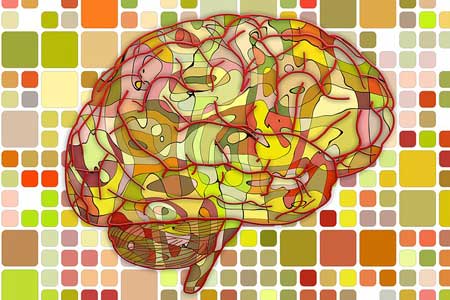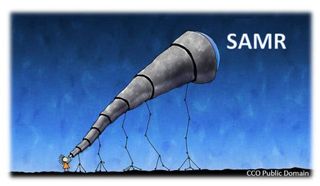Part Four: Beyond SAMR… Technology, Deeper Learning, and Rigor


Welcome to the fourth in this series of posts promoting the idea of going to SAMR and beyond. In this post I would like to introduce you to way that you can ensure the deeper thinking and rigor are part of school wide technology integration. Before reading, please take a moment to subscribe by email or RSS, and also give me a follow… on Twitter at mjgormans. I promise you will find some wonderful information coming your way in the posts that follow…So sign up now and please pass this on with a retweet. Also remember you can book me for a conference or your school district with workshops that are informative, engaging, and practical. Check out my Booking Page and as always… thanks so much! Mike Gorman (https://21centuryedtech.wordpress.com/)
Part Four: Beyond SAMR… Technology, Deeper Learning, and Rigor
With being what I think is the last post in the “Beyond SAMR Series”, I want to emphasizes several other ideas that will allow you to employ SAMR and then take a few more steps. As stated in an early post, SAMR is a wonderful model to begin with, as teachers learn to integrate technology into their curriculum. For those unfamiliar with SAMR, this is a model that allows teachers to see different stages of technology integration. At the same time, as teachers travel on a best practices journey it will be important to look at lessons with some other filters, SAMR, after all, is only one.
Your question might be… can you explain further? Please understand that the highest level of SAMR is not always filled with deep learning and rigor. Sometimes it is just transformative technological in action, not representing real transformative learning. Understand that there may have actually been higher levels achieved on the way to the final step. Is it possible to get to the top step with out higher level l;earning? Imagine an entertaining and polished green screen presentation summarizing route content, with no higher order thinking. The technology has gone through a Redefinition… but has the learning?
For this reason I ask teachers to use both Blooms and Webs DOK as a filter along with SAMR as they employ technology. The high-end of SAMR provides a wonderful opportunity for students to own content creation with the redefinition of technology use. At the same time,we must think about where the content thinking applies on our other filters. Most of us are familiar with Blooms. These amazing verbs allow our students to perform the verbs of remembering, understanding, applying, analyzing, evaluation and creating. It is important to note what steps the students took to get to creating. Did they have to go beyond remembering… or did they even have to remember. It is possible that they could be at the top of Bloom and SAMR without some of the other high level or even basic verbs. When designing a technology task be aware of the Bloom’s verbs that are being used.
In fact, why not bring in Webb’s DOK. While not as well-known, it is important. Let’s take a closer look. Webb’s actually contains four levels. I have listed these below with possible verbs and applications that might be associated at each level.You may wish to learn more about Norman Webb’s Depth of Knowledge Levels.
- Recall and Reproduction – This task does not require high cognitive tasks and is not real demanding except to those who have problems with memorization. The idea is really based on learning facts, and learning could actually be questioned based on your definition. Verbs include: copying, matching, memorizing, computing, defining, recognizing, labeling.
- Skills and Concept – This is usually a task with more than one mental step. It may require some extra thinking but will have one closed answer. It will usually require application of a skill or understanding of a concept. Verbs include: comparing, predicting, organizing, showing, modifying, summarizing, estimating.
- Strategic Thinking – This may require multiple answers or approaches. It requires an understanding and may require a reasoning and abstract thinking to provide a multiple step response. Verbs include: solving non-routine problems, designing an experiment, or analyzing characteristics, formulating hypothesis an answer, develop argument, differentiating between idea, designing to solve a problem.
- Extended Thinking – This task requires the most complex and extensive cognitive effort. It demands the synthesis of information from multiple sources, often over an extended period of time. It can also include the transfer of knowledge from one domain or area to solve problems in another. It can represent the idea of real applications in new situations. Verbs include: applying concepts, connecting ideas, reasoning, designing, critiquing.
Webb’s DOK is a very important filter, along with Blooms, when integrating technology in the educational setting. Many times a project will display signs of SAMR’s substitution but lack important levels in Webb’s DOK and Blooms. Take a look below and try to assess the deeper learning and rigor in the following projects.
- Students provide a green screen production of overview of Mar’s facts found on page 25 of the Science Book
- Students type an opinion paper contrasting the ideas of Britain and the Colonies in regards to the American Revolution using articles supplied by teacher.
- Students create a paper slide video to explain a difficult concept in math
- Students invent a new water purifier for under $50 that can be used in drought stricken areas of Africa citing recourses and demonstrating success and possibility of use for product.
- Students in robotics studying gear ratio program a car to go through maze.
Note that some provide high SAMR levels but low marks on Blooms and Webb’s DOK. Others may actually be higher on Blooms and Webb’s DOK but lower on SAMR. It might also be important to look at all of the activities that led up to a final project. Sometimes some of the deepest thinking can be found during this cycle of learning. In conclusion, it is not about the technology, it really is about the learning and understanding that is a final result of the activity. Please take a moment and try to use this document I put together in order to assess the level of learning in a given lesson. _Tech_Deeper Learning Score mjgormans
Tech & Learning Newsletter
Tools and ideas to transform education. Sign up below.
Places to Learn More
- Webb’s Depth of Knowledge
- Blooms Digital Taxonomy
- SAMR Padagogy Wheel
- Blooms Learning Types (Same as Below… look at page 24)
- Blooms and Learning Types
Thank you for joining me and I hope you found this information something you can use in your school and useful to share with other educators. As always, I invite you to follow me on twitter (mjgormans). Please give this post a retweet and pass it on to someone who will benefit. To ensure you do not miss a future valuable post or other resource covering PBL, Digital Curriculum, STEM, 21st-century learning, and technology integration please sign up for 21centuryedtech by email or RSS. Have a great week! Mike (https://21centuryedtech.wordpress.com/
cross-posted at 21centuryedtech.wordpress.com
Michael Gorman oversees one-to-one laptop programs and digital professional development for Southwest Allen County Schools near Fort Wayne, Indiana. He is a consultant for Discovery Education, ISTE, My Big Campus, and November Learning and is on the National Faculty for The Buck Institute for Education. His awards include district Teacher of the Year, Indiana STEM Educator of the Year and Microsoft’s 365 Global Education Hero. Read more at 21centuryedtech.wordpress.com.










